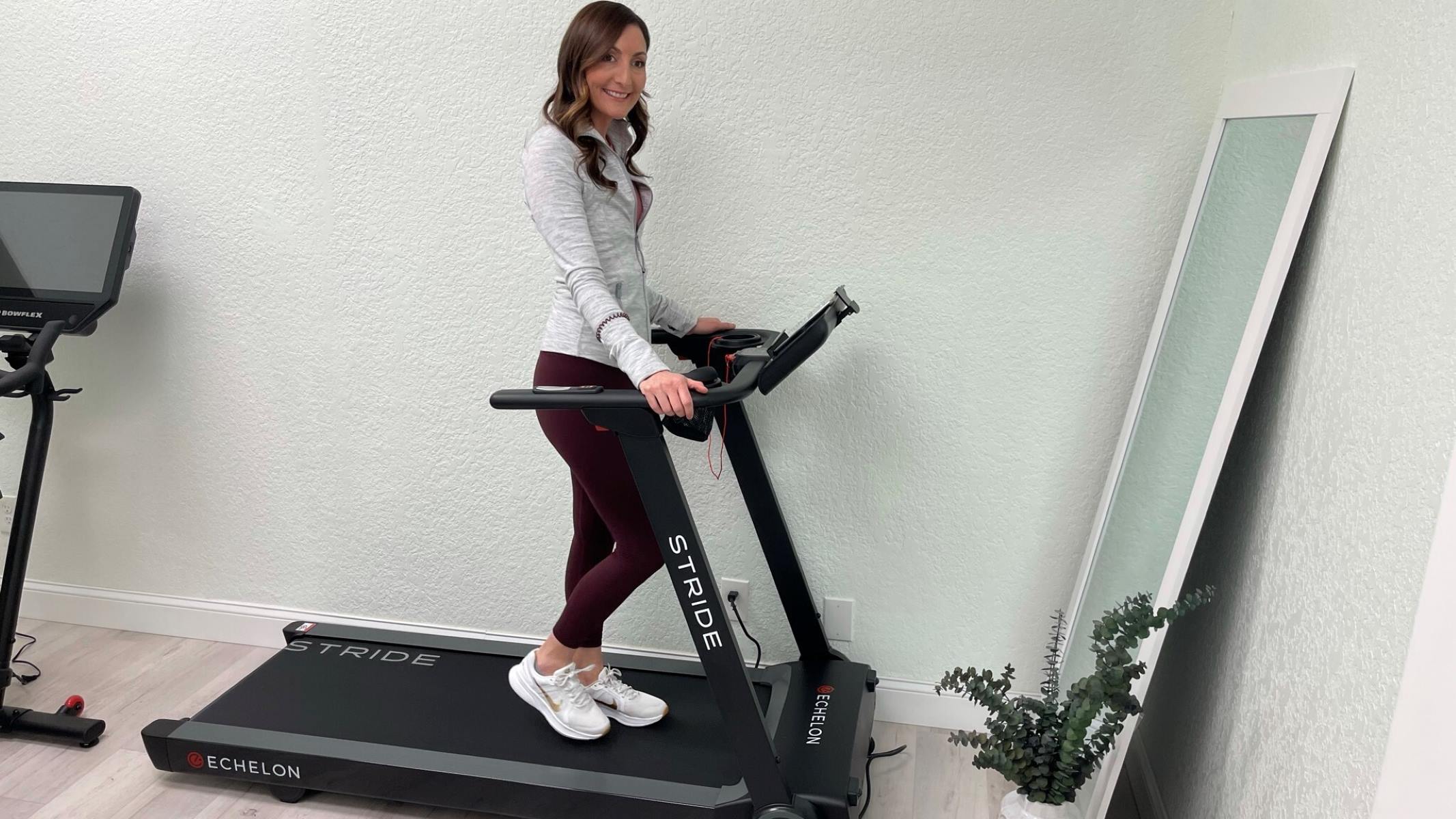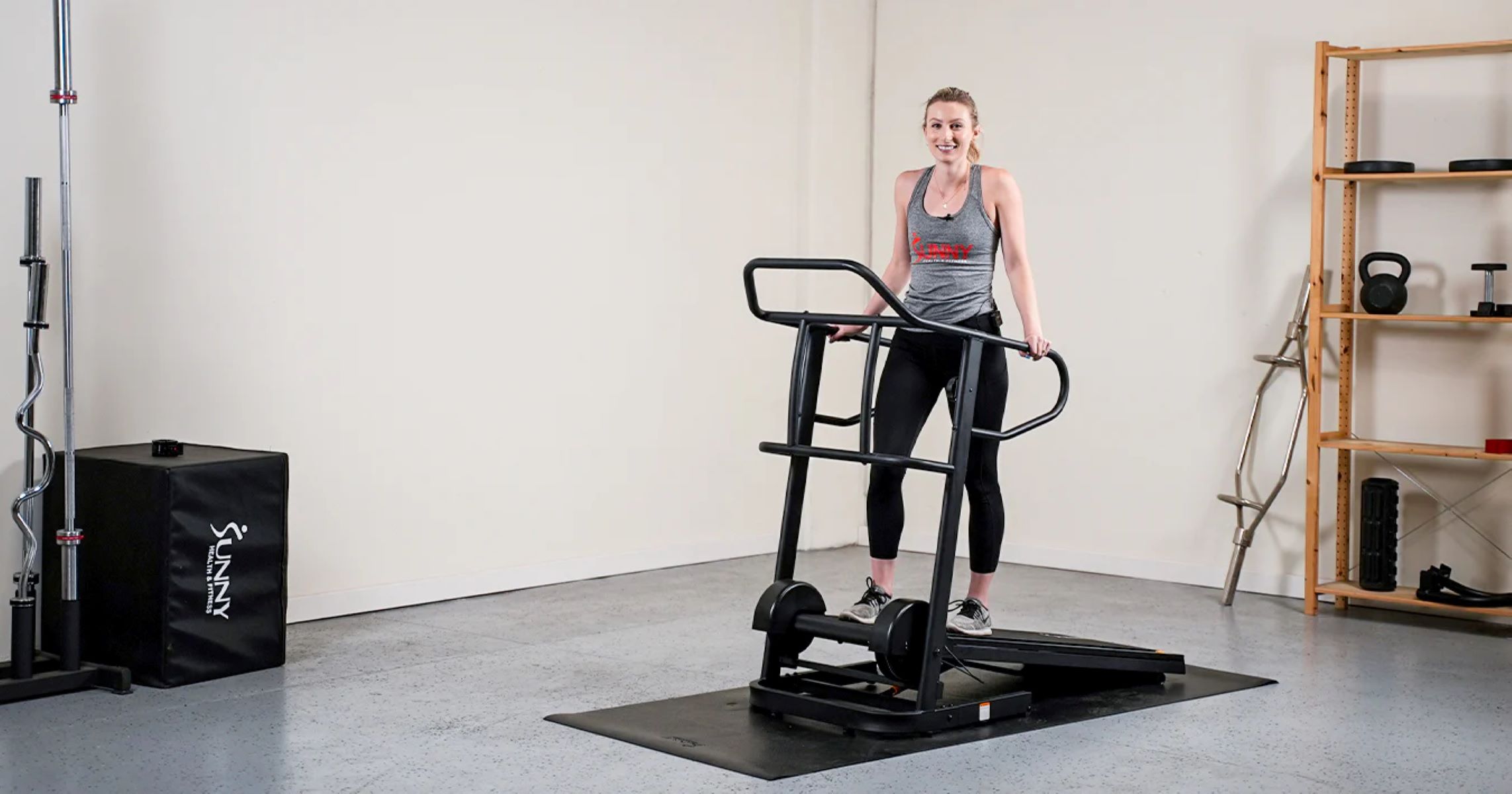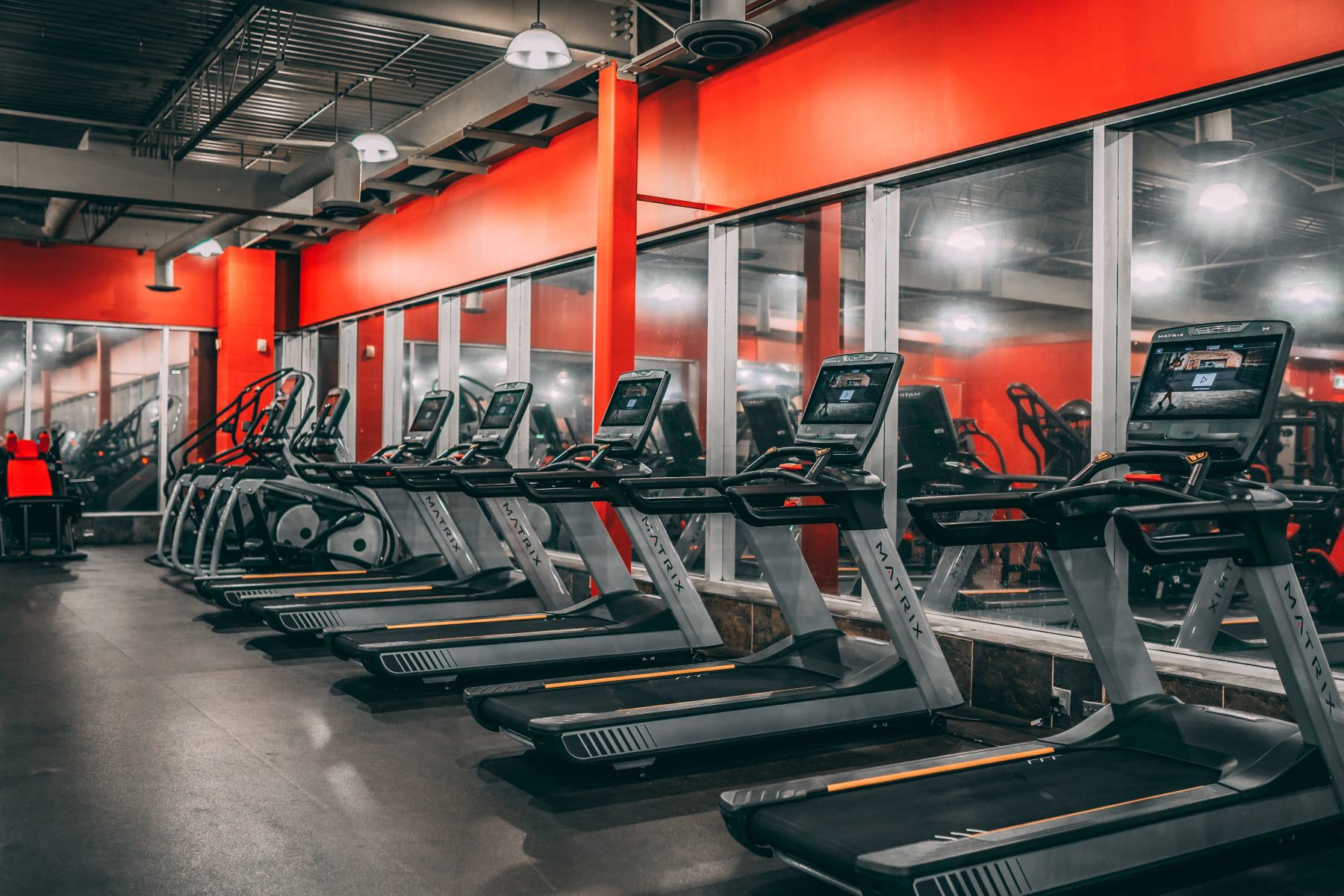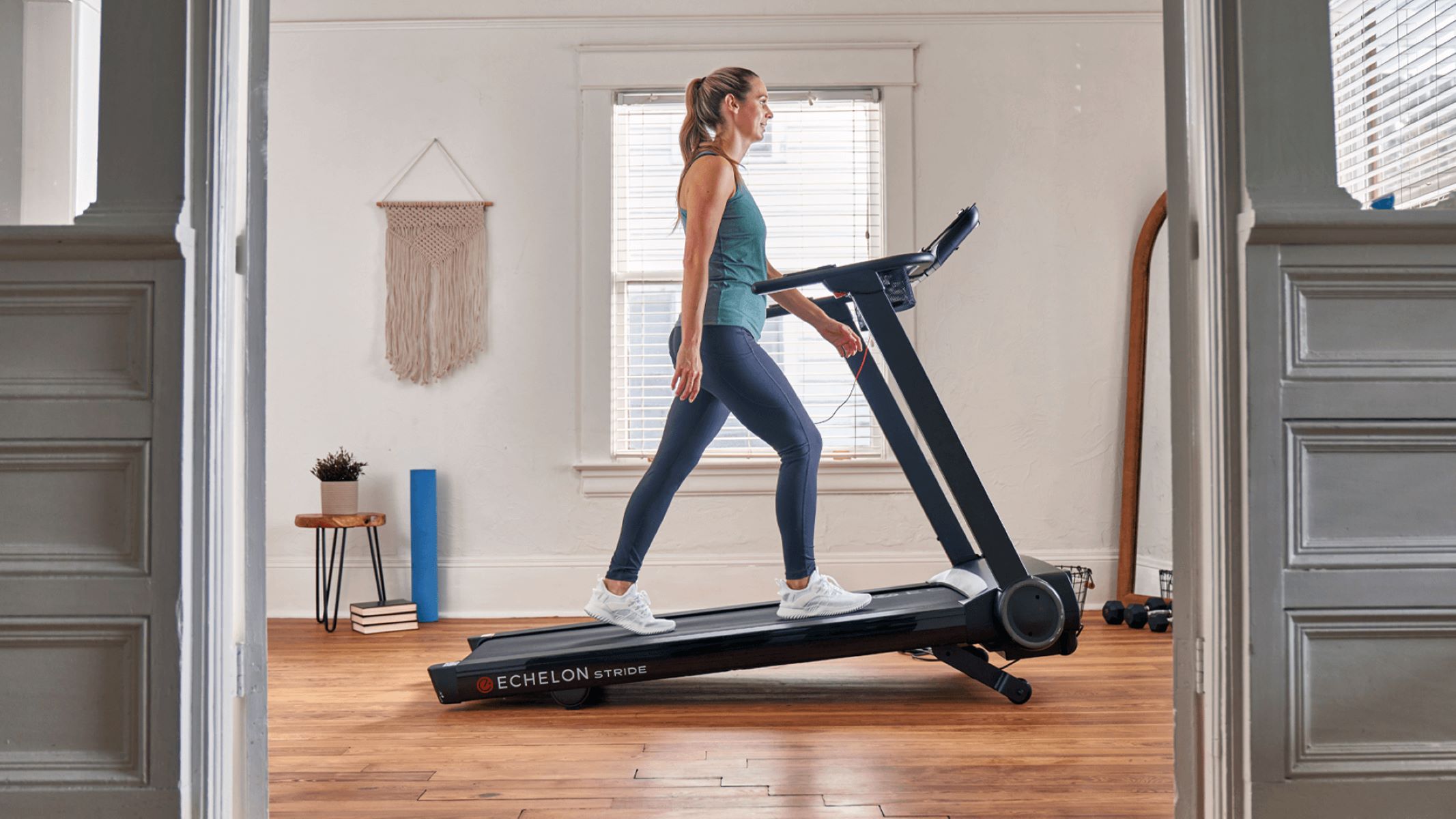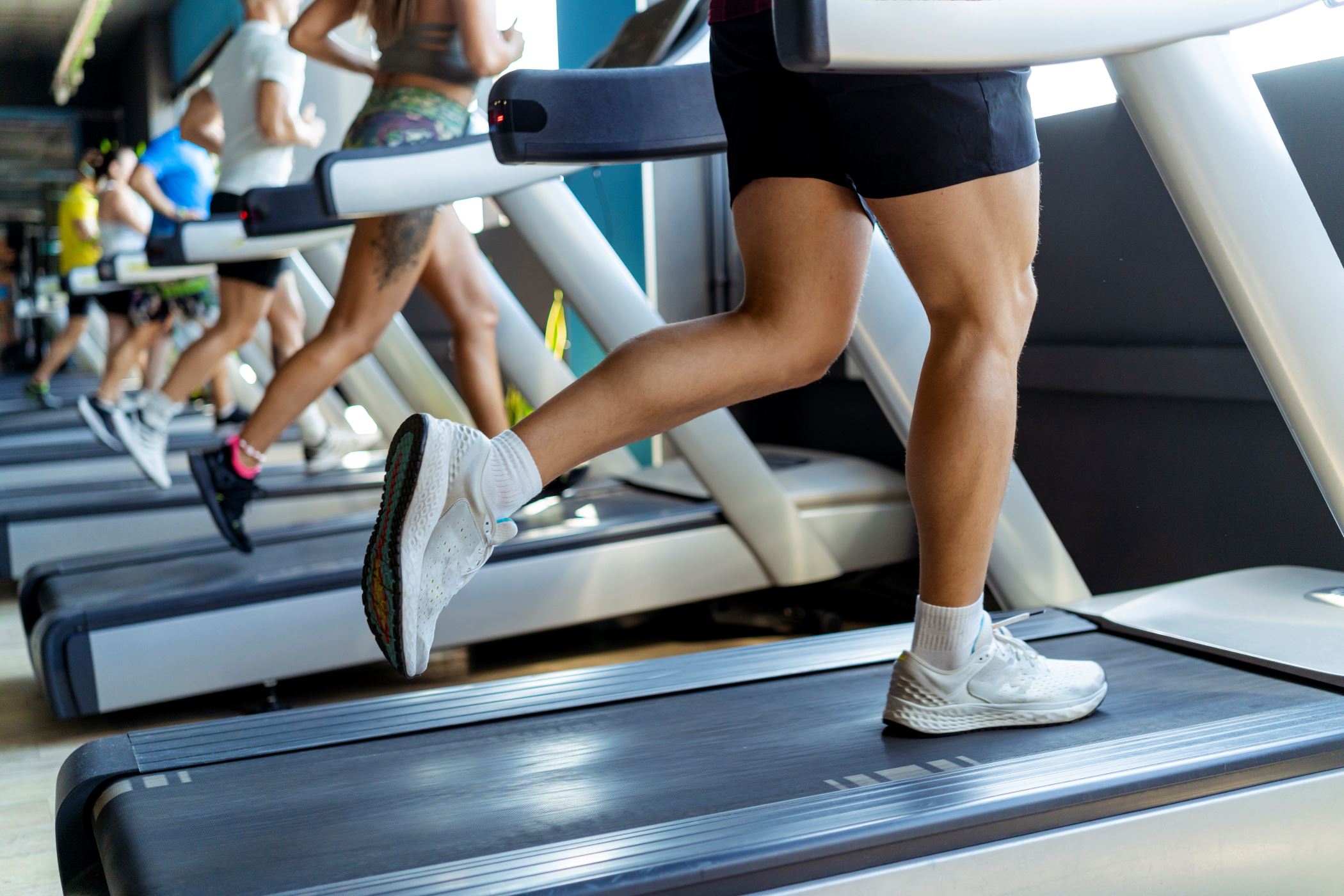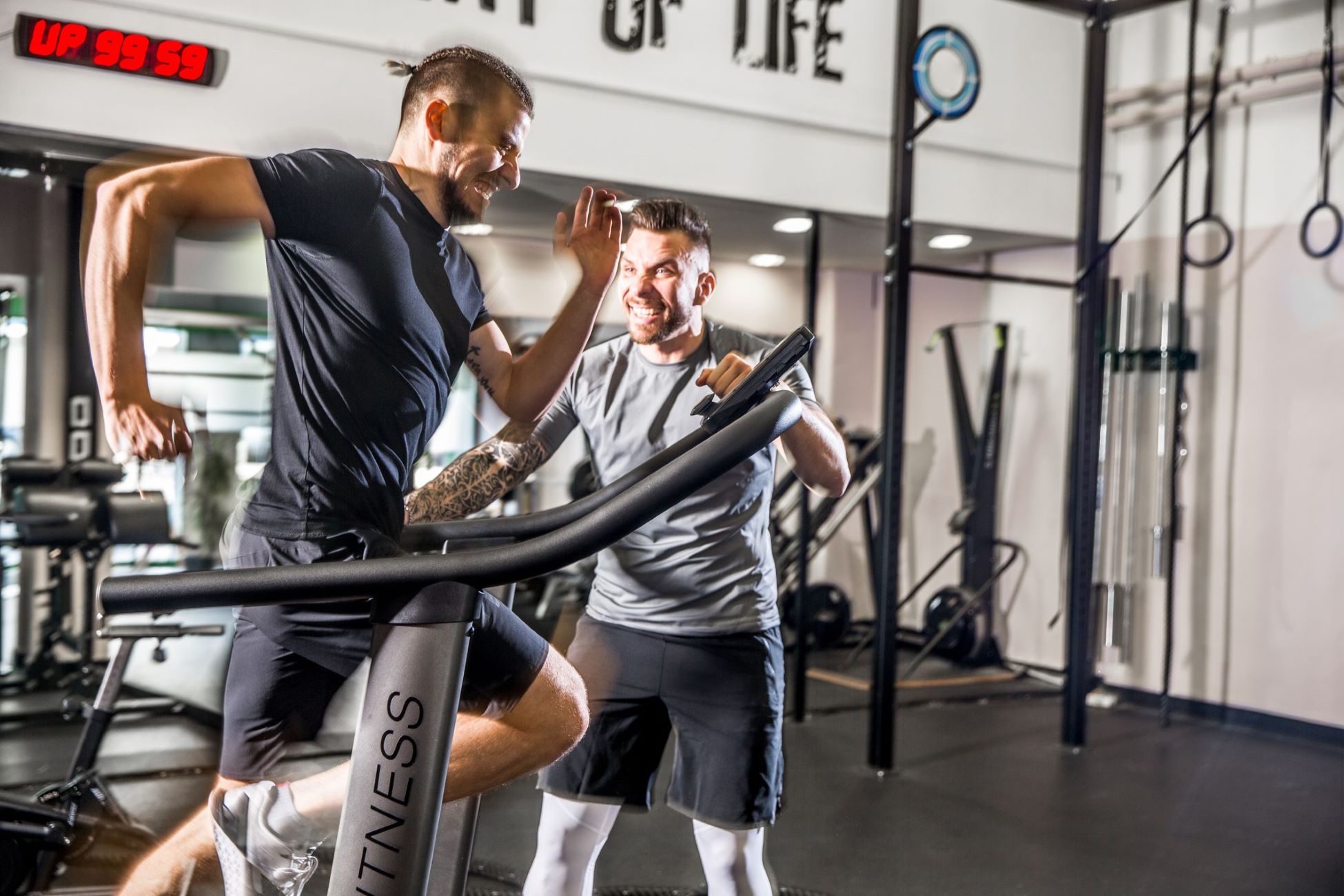

Featured
What Was A Treadmill Invented For
Modified: January 2, 2024
Discover the history and purpose of the treadmill in our featured article. Learn what the treadmill was originally invented for and how it has evolved over time.
Overview
The treadmill is a versatile exercise machine that has become a staple in gyms and homes around the world. Its popularity stems from its ability to provide a convenient and efficient way to engage in cardiovascular exercise without the need for outdoor space or specific weather conditions. But have you ever wondered what the treadmill was originally invented for?
Contrary to popular belief, the treadmill wasn’t initially designed for exercise or fitness purposes. Its origins can be traced back to ancient times, where it was used as a device for grinding grain or pumping water. Over the centuries, the concept of the treadmill evolved, and it found new applications in various industries.
In this article, we will explore the history of the treadmill, its early uses, and how it eventually became a popular exercise and fitness equipment. We will also delve into its role in physical rehabilitation and sports training, as well as its modern-day applications.
So, if you’ve ever wondered about the fascinating journey of the treadmill and its impact on the world of fitness and beyond, let’s dive in and discover its surprising origins and evolution!
History of the Treadmill
The history of the treadmill dates back to ancient times, where its early iterations were used for various industrial purposes. One of the earliest known uses of a treadmill can be traced to the Roman Empire, where it was used as a water-lifting device. This early version consisted of a large wheel with steps on its outer edge, which would be turned by human or animal power, thereby lifting water from a well or river.
The design of the treadmill remained relatively unchanged for centuries until the 19th century, when it began to be used in other industries. In the early 1800s, treadmills were commonly employed in British prisons as a form of hard labor for prisoners. The purpose was not only to punish inmates but also to provide a means of power generation. Prisoners would step on the revolving steps of the treadmill, which would in turn power mills or grindstones.
During this time, the treadmill gained a reputation as a source of punishment due to the physically demanding nature of the work. In fact, its association with prisons led to the invention being referred to as the “treadmill” due to the repetitive stepping motion resembling the action of treading grapes.
As the industrial revolution progressed, the demand for manual labor decreased, and the treadmill fell out of favor in the 20th century. However, its design caught the attention of inventors who saw potential in repurposing it for exercise and fitness.
In the early 1950s, the first modern treadmill was introduced by Dr. Kenneth H. Cooper, a physician, and researcher. He developed the concept of using a motorized belt system that allowed individuals to walk or run in place, providing a controlled and adjustable workout.
Since then, treadmills have undergone significant advancements in technology and design. Today, they come equipped with features like adjustable speeds, incline options, heart rate monitors, and even multimedia capabilities for entertainment during workouts. The treadmill has become a popular and convenient choice for people looking to engage in indoor cardio exercise.
Early Uses of the Treadmill
While the treadmill is widely known today as a piece of exercise equipment, its early uses were far removed from the realm of fitness. As mentioned before, the treadmill was originally designed for industrial purposes.
One of the notable early uses of the treadmill was in British prisons during the 19th century. Prisoners would be sentenced to work on the treadmill as a form of punishment and hard labor. The repetitive stepping motion of the treadmill not only served as a means of exertion but also powered mills and grindstones in the prison.
The intention behind using treadmills in prisons was twofold. Firstly, it was a way to utilize the prisoners’ energy for productive purposes, such as grinding grain or pumping water. Secondly, the physical exertion provided a form of punishment, intended to deter prisoners from committing future offenses.
Outside of the prison system, treadmills were also used in certain industries. For example, in mines, treadmills were employed to power equipment and extract minerals. Miners would walk or run on the revolving belt of the treadmill to generate power, which would be used to operate machinery or lift heavy loads.
Another interesting early use of the treadmill was in asylums and mental institutions. In the late 19th and early 20th centuries, treadmills were installed in these institutions as a form of therapy for mental health patients. The belief was that the physical exertion of walking or running on the treadmill would help calm and stabilize the patients’ minds.
Although the early uses of the treadmill were primarily utilitarian rather than health-related, they laid the foundation for its later transformation into an exercise and fitness tool. The treadmill’s ability to provide a controlled and repetitive walking or running motion made it a prime candidate for repurposing in the realm of physical fitness.
As we explore the subsequent sections, we’ll delve further into the evolution of the treadmill from its industrial origins to its current role in exercise, rehabilitation, and sports training.
Treadmills in Physical Rehabilitation
One of the significant breakthroughs in the utilization of treadmills came in the field of physical rehabilitation. Treadmills have been widely adopted as a valuable tool in the rehabilitation process for individuals recovering from various injuries or surgeries, as well as those with mobility impairments.
The controlled and adjustable nature of treadmills allows healthcare professionals to create targeted exercise programs tailored to an individual’s specific needs and capabilities. In the realm of physical therapy, treadmills are used to help patients regain strength, improve mobility, and relearn proper walking patterns.
For patients with lower limb injuries, such as fractures or ligament tears, treadmills provide a safe and controlled environment for gait training. By adjusting the speed, incline, and support, therapists can gradually increase the intensity of the exercise, helping patients regain strength and coordination.
Treadmills are particularly useful for patients who need to relearn proper walking techniques. Whether it’s due to a stroke, spinal cord injury, or amputation, treadmills can support patients with harness systems or parallel bars, allowing them to practice their gait and balance while reducing the risk of falls.
In addition to physical rehabilitation, treadmills are also used in cardiac rehabilitation programs. Cardiac patients who have undergone heart surgeries or experienced heart-related health issues can benefit from treadmill exercise as part of their recovery process.
Under the supervision of medical professionals, patients can gradually increase their exercise intensity and duration on the treadmill to improve cardiovascular fitness and strengthen their heart muscle.
The integration of technology has further enhanced the role of treadmills in physical rehabilitation. Virtual reality and interactive displays are often utilized to engage patients and make the rehabilitation process more enjoyable. These advancements not only increase patient compliance but also provide valuable data to therapists for tracking progress and adjusting treatment plans.
Overall, treadmills have revolutionized the field of physical rehabilitation, providing a versatile and effective tool for improving mobility, strength, and cardiovascular health. Their adaptability and customizable features make them an essential component of rehabilitation programs worldwide.
Treadmills for Exercise and Fitness
Although treadmills were originally designed for industrial purposes and later adapted for physical rehabilitation, their widespread popularity in the modern age comes from their use in exercise and fitness routines. Treadmills have become a convenient and efficient way for individuals to engage in cardiovascular workouts from the comfort of their homes or at the gym.
One of the key advantages of treadmills for exercise is their accessibility. Regardless of weather conditions or outdoor terrain, individuals can simply hop on a treadmill and start walking, jogging, or running at their preferred pace. This makes them particularly appealing to those who may not have access to safe outdoor running routes or who prefer the controlled environment of an indoor workout.
Treadmills also offer versatility in terms of workout intensity. With adjustable speed and incline settings, individuals can customize their workouts to match their fitness levels and goals. Whether it’s a leisurely walk, an intense uphill run, or anything in between, treadmills can accommodate a range of exercise preferences.
Additionally, treadmills provide valuable feedback during workouts. Most modern treadmills come equipped with built-in heart rate monitors, distance trackers, and calorie counters, allowing users to track their progress and set goals for improvement. This feedback can be motivating and help individuals stay accountable to their fitness journey.
Another benefit of using treadmills for exercise is the lower impact on joints compared to outdoor running. The cushioned surface of the treadmill belt absorbs much of the shock, reducing the risk of repetitive stress injuries and minimizing the strain on knee and ankle joints.
Treadmills have also evolved to incorporate various features and technologies that enhance the exercise experience. Many treadmills now have built-in entertainment systems, such as LCD screens, that allow users to watch shows, listen to music, or even participate in virtual exercise classes while working out. This entertainment factor can make workouts more enjoyable and help individuals stay motivated.
Furthermore, treadmills can be used for a variety of exercise programs beyond walking or running. Some models offer pre-programmed workouts, like interval training or hill simulations, which can add variety and challenge to routines. Others may come equipped with features like workout tracking apps or compatibility with wearable devices to provide a more comprehensive fitness experience.
In summary, treadmills have become a popular choice for exercise and fitness enthusiasts due to their convenience, versatility, and technological advancements. Whether used at home or in a gym setting, treadmills provide individuals with a reliable and effective tool for cardiovascular workouts, helping them achieve their fitness goals in a controlled and enjoyable manner.
Treadmills in Sports Training
While treadmills are commonly associated with general exercise and fitness, they also play a significant role in sports training. Athletes across various disciplines utilize treadmills as a valuable tool to enhance their performance, improve endurance, and simulate specific training conditions.
One of the primary advantages of treadmills in sports training is their ability to control and replicate running or sprinting conditions. Athletes can adjust the speed and incline settings to mimic different terrains and training scenarios, such as uphill sprints or interval training. This allows athletes to simulate race conditions and target specific aspects of their performance.
Treadmills can also be used to monitor and analyze an athlete’s running form and technique. By observing gait patterns, stride length, and cadence, coaches and trainers can provide feedback and make adjustments to optimize efficiency and prevent injuries. This real-time analysis can be especially beneficial for long-distance runners and track athletes.
Another application of treadmills in sports training is for altitude training. By setting the treadmill at a high incline, athletes can simulate the reduced oxygen levels experienced at higher altitudes. This type of training can help improve aerobic capacity, endurance, and overall athletic performance in sports that require prolonged exertion at altitude, such as long-distance running or cycling.
Furthermore, treadmills provide a controlled and safe environment for sports rehabilitation and injury prevention. Athletes recovering from lower body injuries, such as sprained ankles or stress fractures, can gradually reintroduce running and sports-specific movements using the adjustable settings of a treadmill. This allows for a controlled progression and reduces the risk of re-injury.
Treadmills are also useful for strength and conditioning workouts in sports like football, soccer, and basketball. Athletes can incorporate treadmill sprints, lateral movements, or agility drills into their training routines to enhance speed, quickness, and change-of-direction capabilities. The versatility of the treadmill allows for sport-specific training and customization of workouts to match the demands of the game.
Additionally, treadmills in sports training are not limited to running exercises. Athletes from various sports, including martial arts and team sports, use treadmills for cross-training and conditioning purposes. High-intensity interval training (HIIT) sessions on treadmills can help improve cardiovascular fitness, speed, and explosive power, making them a valuable tool for a wide range of athletes.
In summary, treadmills have found their place in sports training as a versatile tool for enhancing performance, simulating training conditions, and aiding in rehabilitation. Athletes and coaches recognize the benefits of treadmills in improving endurance, monitoring technique, and providing a controlled environment for sports-specific training, making them an integral part of sports performance programs.
Modern Applications of Treadmills
In addition to exercise, rehabilitation, and sports training, treadmills have found new and innovative applications in the modern era. Advancements in technology and scientific research have expanded the possibilities of how treadmills can be utilized for various purposes beyond traditional fitness.
One of the modern applications of treadmills is in scientific research, particularly in the fields of biomechanics and physiology. Treadmills are used to study human locomotion, gait analysis, and the effects of exercise on the body. Researchers can collect data on factors like stride length, ground reaction force, and oxygen consumption to better understand human movement and optimize athletic performance.
Furthermore, treadmills have become an essential tool in virtual reality (VR) and augmented reality (AR) experiences. By integrating treadmills with immersive technologies, individuals can explore virtual environments while walking or running on the treadmill. This opens up exciting possibilities for gaming, training simulations, and virtual travel experiences.
Treadmills have also found applications in workplace ergonomics. With the rise of sedentary lifestyles and desk-bound jobs, treadmill desks have emerged as a way to combat the negative effects of prolonged sitting. Treadmill desks combine a standing desk with a slow-speed treadmill, allowing individuals to work while walking at a comfortable pace. This promotes physical activity and reduces the risks associated with excessive sitting, such as obesity and cardiovascular diseases.
In recent years, there has been a rise in the popularity of “desk treadmills,” where individuals can place a small treadmill under their existing desk to incorporate light physical activity throughout the workday. This enables individuals to remain productive while engaging in low-intensity exercise, such as walking.
Another modern application of treadmills is in entertainment and interactive experiences. Some fitness facilities and amusement parks feature interactive treadmill games that turn exercise into a fun and engaging activity. Users can play interactive games or embark on virtual adventures while walking or running on the treadmill, adding an element of excitement and motivation to their workouts.
Moreover, treadmills have entered the realm of personal wellness and stress management. Walking or jogging on a treadmill is a popular form of stress relief and mental relaxation. Many people find that it helps clear their minds, reduces anxiety, and improves their overall well-being. Treadmills can be a great tool for incorporating mindfulness and self-care into one’s daily routine.
From scientific research to virtual reality, workplace ergonomics to entertainment, and personal wellness to stress management, the modern applications of treadmills extend far beyond traditional exercise and fitness. With ongoing advancements in technology and the recognition of the health benefits of movement, treadmills continue to evolve and find new and exciting avenues of innovation.
Conclusion
The treadmill has come a long way from its humble origins as a simple device for grinding grain and pumping water. Through centuries of evolution, it has transformed into a versatile tool with a wide range of applications in various industries.
From its use as a form of punishment in prisons to its role in physical rehabilitation, treadmills have proven to be beneficial in improving mobility, strength, and cardiovascular health.
In the realm of exercise and fitness, treadmills have become a convenient and effective solution for individuals looking to engage in cardiovascular workouts. With adjustable settings, built-in feedback mechanisms, and entertainment features, they offer a customizable and enjoyable exercise experience.
Furthermore, treadmills have found a place in sports training, allowing athletes to simulate race conditions, improve technique, and enhance endurance. They have become a valuable tool in optimizing athletic performance across various disciplines.
Modern advancements have further expanded the applications of treadmills, from their role in scientific research and virtual reality experiences to promoting workplace ergonomics and personal wellness.
With their adaptability, versatility, and ongoing technological advancements, treadmills continue to shape the way we exercise, rehabilitate, train, and experience physical activity.
Whether it’s walking, jogging, running, or using them for rehabilitation purposes, treadmills have become an integral part of our quest for health, fitness, and well-being.
As we look to the future, it will be exciting to witness how treadmills continue to evolve and find new applications, further enhancing our understanding of human movement, promoting physical activity, and improving the quality of our lives.

